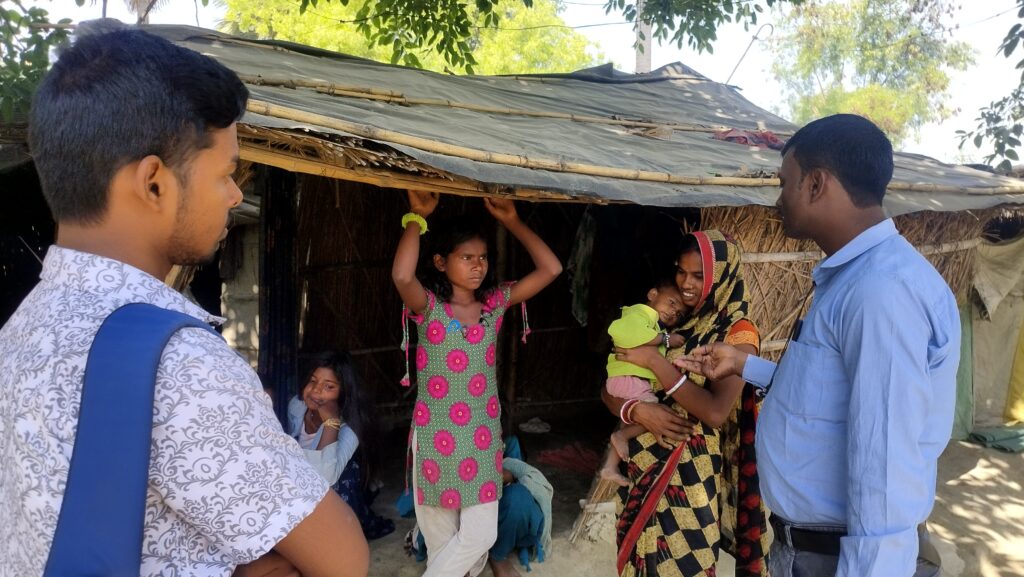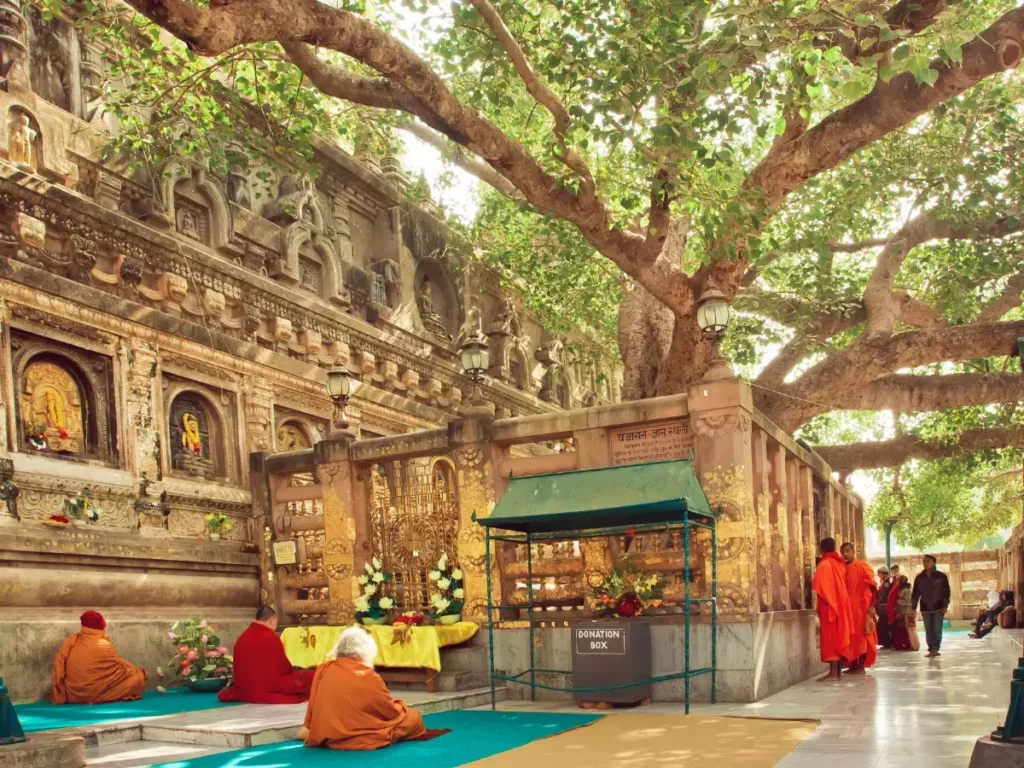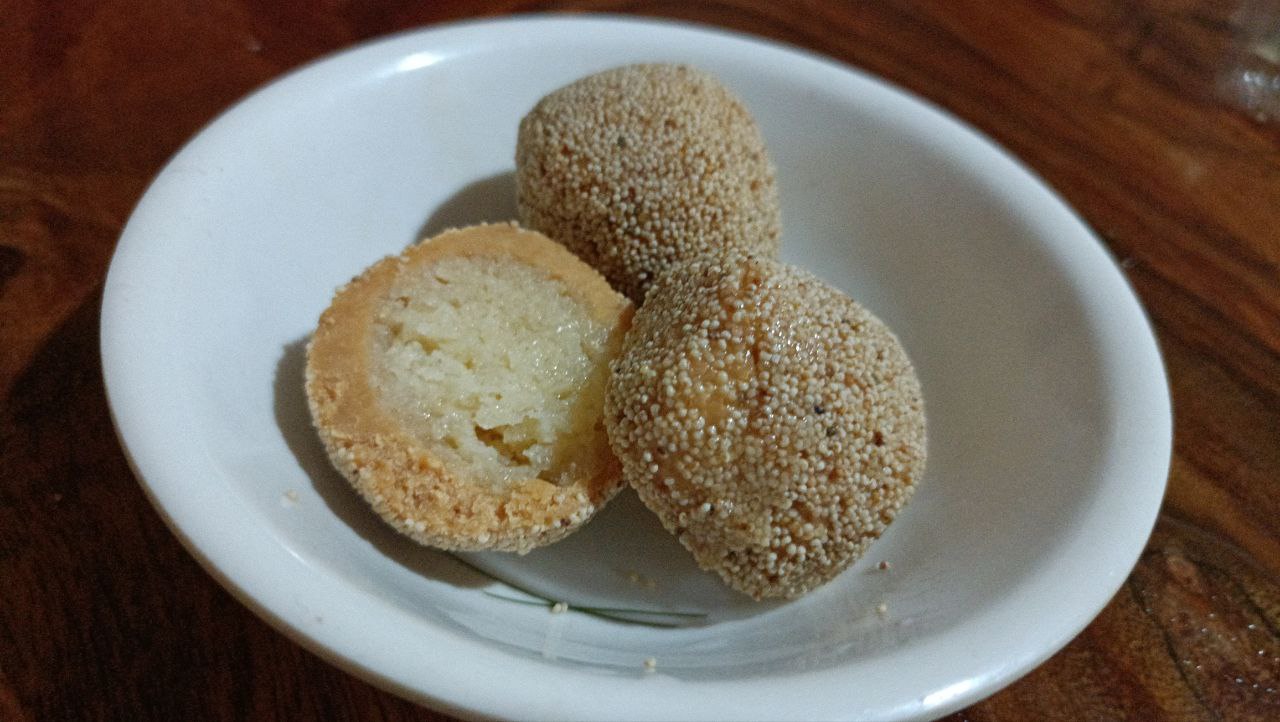It was just another afternoon on a hot day in April signalling the onset of summer heat in northern India. I was waiting at the railway crossing called gumti by locals along with my office colleague. It’s been a month since I arrived in Dalsinghsarai block of Samastipur district, in Bihar as part of my fellowship. I remember the day I learned I was placed with Innovators In Health.
I wasn’t excited at the prospect of going to Bihar, which I considered the same as Uttar Pradesh (my native state) in terms of geography with nothing much to offer. As I read about the organisation, their work in the tuberculosis program. It got me excited to explore before making a judgement. I have never worked in the grassroots directly with the community before, hence the prospect of getting this opportunity was very exciting. Within a month, I am slowly acquainting myself with the state, its people, and the culture.

Welcoming Bihar
I have heard of people coming to Bihar with their biases about culture, people, and food which are stereotypes that outsiders have created about every state in the country without any relevant cultural context. Bihar is considered unsafe with a high crime rate; but so are other parts of the country. Many of these preconceived notions filled my mind as well. After coming here these notions are dropping every day.
I come from Delhi-NCR and women’s safety is a concern in the capital. I came to Bihar with the same notion, reinforced through what I had read and heard in media. However, everyday I am meeting wonderful people who dismantle these stereotypes for me. From a helpful e-rickshaw driver to people at nearby shops where I usually go in the evening to buy everyday stuff, I never feel unsafe or uncomfortable. In one month of living in Dalsinghsarai, I wonder which of the two places is more unsafe?
Read Dalsinghsarai: A Place Allowing Me To Challenge Myself by 2021 cohort India Fellow Aranya Malik
Beauty Of Bihar
I have been exploring the villages while on my community visits, the beauty of rural Bihar spellbound me. The greenery is soothing to the eyes. Mango and litchi gardens are so nostalgic of the times I spent as a child at my grandparent’s house every summer. Vast expanses of fields dotted with trees varying from palm to banana trees and a clear blue sky are a sight for sore eyes. I am slowly falling in love with the beauty of this place, a welcoming sight for someone accustomed to being surrounded by buildings. The sight of the local river called Balaan is a lifeline for the people here and reminds me to go with the flow. The state boasts many tourist attractions, including pilgrimage sites such as Bodhgaya, Rajgir, and Nalanda.

Cultural Complexities
Every small festival and ritual in Bihar is celebrated with joy and abundance, rooted in culture and traditions, just like major festivals. Recently, I witnessed the Ram Navami celebrations during which pandals were decorated with the idol of the goddess Durga and her nine forms. There were shops with sweets of all kinds, toy shops brimming with excited kids, and women in their colourful saris performing rituals.
I also came across the Janeu Sanskaar tradition, a week-long ceremony celebrated primarily in ‘upper caste’ Hindu families, my own faith being different. In this tradition, boys wear a sacred thread believed to protect and aid their focus on education and spiritual growth. Such rituals and traditions still hold significance in the 21st century; but there is a generational conflict brewing now. In conversing with people, I found that the older generation is practicing these traditions but for many in the younger generations, the relevancy of wearing it all the time is questioned. Because most of the young generation is migrating outside for studies, work and other opportunities.
Bacche log janeu ka mahatva nahi samajhte jitney mere pitaji samajhte hain. Ab bas yeh ek rasm riwaaz ban gaya hai (children don’t understand the importance of janeu as much as my father does. Now it has become just a residual ritual to be performed)
Geeta* (name changed to protect identity)
Served With Love
Food is indeed the language of love which connects people irrespective of religion, caste, state or country. I connected with people on my shared love of food and different cuisines. I came across a sweet called raskadam, a speciality in this region. This ordinary looking sweet is full of mysteries. Raskadam is shaped into small balls coated with white poppy seeds (pasto dana) and encases a sweet rasgulla with layers of creamy milk solids (mawa) on the inside.

On biting it, one discovers an explosion of flavours and textures. These little balls of sweet delight sums up my experience of Bihar as a place – no matter how ordinary a place looks or sounds, one should not form preconceived notions without exploring it.
The People
While working with IIH, i came to observe a strong sense of ownership and well being for the community in the people around. All the senior management as well as field team consists of people from same social group we are working with. These people could go outside the state and make their career in a reputed profession, but they chose to stay back and work for their community and people.
I want to make my community strong addressing their issues and work on them because one should start from their home and empower them first
Rohit (Area coordinator – Drug Resistent TB, IIH)
The idea of people from the community working amidst them is inspiring. It gives hope to the youth and children about their future. The state’s villages have untapped potential, waiting for the right channel and opportunity to guide them.
The Social Fabric
The state faces significant issues, with society deeply divided by caste and gender. In the communities I visited, I found most men are breadwinners of the family. They often migrate to other states to work as labourers leaving their families behind. Women stay at home taking care of their parents and extended families.
Health and hygiene is a grave concern that people struggle with in their daily lives. When a family member gets sick, the first choice is often a rural medical practitioner, also known as a jhola chaap doctor (quack). This often delays the right diagnosis and correct treatment, which can be fatal. Men usually consume alcohol, tobacco, and smoke which renders their immune system weak making them prone to diseases. Bihar is a dry state, but procurement of alcohol is not an issue for people. It is readily available at a certain price.
Bihar has unique traditions and cultural quirks. Bihar was Magadha the in ancient times and a centre of power, learning and culture. People consider Nalanda the greatest center of learning in the ancient world.
It flourished for 800 years sustained by learned monks and teachers. The state is currently struggling with poverty and illiteracy among the many pressing issues faced by people. How did such a glorious state in ancient times fall from grace?




0 Comments